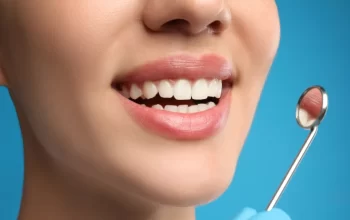When visiting a general dentist, one encounters a range of procedures designed to maintain and improve oral health. It’s important to understand these common procedures, as they form the foundation of routine dental care. General dentists perform three primary categories of procedures: preventive, restorative, and cosmetic dentistry. Preventive care, like cleanings and examinations, helps catch potential problems early. This reduces the risk of more serious issues. Restorative procedures, including fillings and crowns, repair and restore teeth to their natural function. Cosmetic dentistry focuses on enhancing the appearance of teeth. This includes teeth whitening and veneers. Each of these procedures plays a vital role in maintaining not just dental health, but also confidence and well-being. In this overview, we’ll explore these procedures, shedding light on what to expect during a visit to your general dentist. Understanding these can make dental visits less daunting and more productive.
Preventive Dental Care
Preventive dental care is one of the cornerstones of maintaining oral health. Regular check-ups and cleanings are essential for preventing tooth decay and gum disease. During these visits, dentists can identify potential problems such as cavities or gum issues early on. Fluoride treatments and dental sealants are also part of preventive care. These procedures help strengthen teeth and protect against decay. By focusing on prevention, we can often avoid more extensive treatments down the line.
Restorative Procedures
When teeth become damaged due to decay or injury, restorative procedures are necessary to bring them back to full function. Fillings are the most common type of restoration, used to treat cavities. Crowns cover a damaged tooth, restoring its shape and strength. Bridges and dentures replace missing teeth, ensuring that the mouth functions properly. Each restorative procedure is designed to address specific issues, helping maintain a healthy smile.
Cosmetic Dentistry
Cosmetic dentistry enhances the appearance of teeth. This branch of dentistry includes procedures such as teeth whitening, veneers, and bonding. Teeth whitening removes stains and brightens the overall smile. Veneers are thin shells placed over teeth to correct imperfections. Bonding involves applying a resin to teeth to improve their appearance. These procedures can significantly boost self-confidence and improve aesthetics.
Comparison of Common Dental Procedures
| Procedure | Purpose | Frequency |
|---|---|---|
| Cleanings | Prevent plaque buildup | Every 6 months |
| Fillings | Repair cavities | As needed |
| Crowns | Restore damaged teeth | As needed |
| Teeth Whitening | Brighten smile | Every 1-2 years |
What to Expect During a Visit
During a dental visit, we start with a thorough examination. This includes checking for cavities, assessing gum health, and evaluating any potential issues. X-rays may be taken to get a clearer picture of what’s happening beneath the surface. After the examination, a cleaning removes plaque and tartar buildup. If any issues are identified, the dentist will discuss treatment options. Understanding each step of the visit helps reduce anxiety and ensures that we get the most out of our appointments.
The Importance of Dental Care
Regular dental care is critical for maintaining overall health. A healthy mouth can prevent more serious health conditions, such as heart disease and diabetes. By maintaining good oral hygiene and visiting the dentist regularly, we can catch potential issues before they become serious. Good dental care practices contribute to a lifetime of healthy smiles.
Conclusion
Understanding the procedures performed by general dentists empowers us to take charge of our oral health. From preventive care to restorative and cosmetic dentistry, each procedure has its place in keeping our mouths healthy and our smiles bright. By familiarizing ourselves with these, dental visits become less intimidating and more beneficial. For more information on dental care, visit the Mayo Clinic or the Centers for Disease Control and Prevention.



